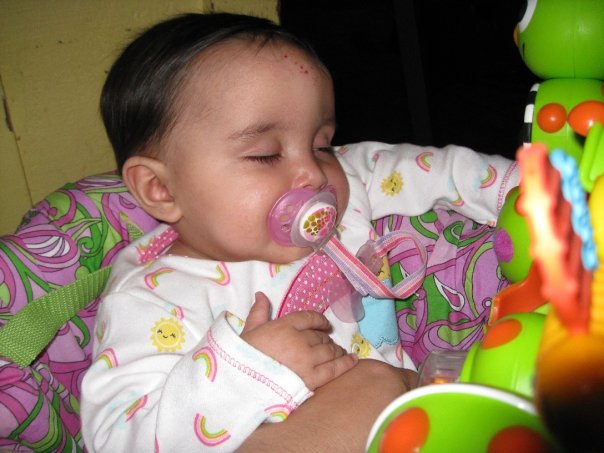Here is all the latest research updates that pertain to GD23. This was compiled by Dr. Raphael Schiffmann (world-renowned GD23 expert and Hannah’s neurologist) and Greg Marces, founder of the Children’s Gaucher Research Fund. Unfortunately, these type of updates only come every 6 months. This is why we need money for research — there is hardly any research being done on GD23, and we need to make sure those that do have the money they need! (So if you can donate anything, please click the paypal button on the left).
Realistically, the best (and I think almost the only) research on the mechanism of neuronopathic Gaucher disease is done by the laboratory of Professor Futerman. A few years ago his laboratory found that the lipid (fatty material) that accumulates in Gaucher disease causes an abnormality of a specific protein that controls the movement of calcium ions in the cell. It is likely that this abnormality is at least in part responsible for the death or malfunction of nerve cells in the brain, particularly in type 2 Gaucher patients.
Recently Dr. Futerman’s laboratory found that a protein that is involved in Parkinson disease is also abnormal in brain cells (neurons and support cells called astrocytes) of Gaucher patients and that this problem is directly related to the storage of Gaucher lipid in those cells. These results demonstrate how Gaucher may be a risk factor for Parkinson disease. Other abnormalities in lipid and protein were discovered in Dr. Futerman’s laboratory over the last year that will further shed light on the consequences of the genetic defect in Gaucher disease. These finding will are also likely to lead to new forms of therapy for neuronopathic Gaucher disease.
Another important research direction is the creation of a new mouse model for Gaucher disease in the brain. This mouse model will be unique because it will allow the regulation of the amount of glucocerebrosidase (the enzyme that is deficient in Gaucher disease) in the brain of the mouse by feeding the mouse with various doses of a medication called tetracycline. The higher the dose of tetracycline, the lower is the enzyme activity in the brain of the mouse. This way the mouse should develop Gaucher disease in the brain that is likely similar to the one that humans develop. Furthermore, stopping feeding the mouse tetracycline will also the ‘correction’ of the enzyme defect at any time. This can be a way to test the effect of therapies on the mouse brain at different stages of the disease.
Other research on neuronopathic Gaucher disease is done in Germany where a group is looking at the role of a different form of glucocerebrosidase that is not lysosomal. This group is trying to see if this other enzyme can compensate for the lysosomal enzyme that is deficient in Gaucher disease.
Other research on the therapy of Gaucher disease is done by biotechnology companies. This includes the use of pharmacological chaperones by Amicus Therapeutics and a new form of substrate reduction
therapy by Genzyme Corporation. Clinical trials in neuronopathic Gaucher disease may begin in the coming years.





Latest Comments